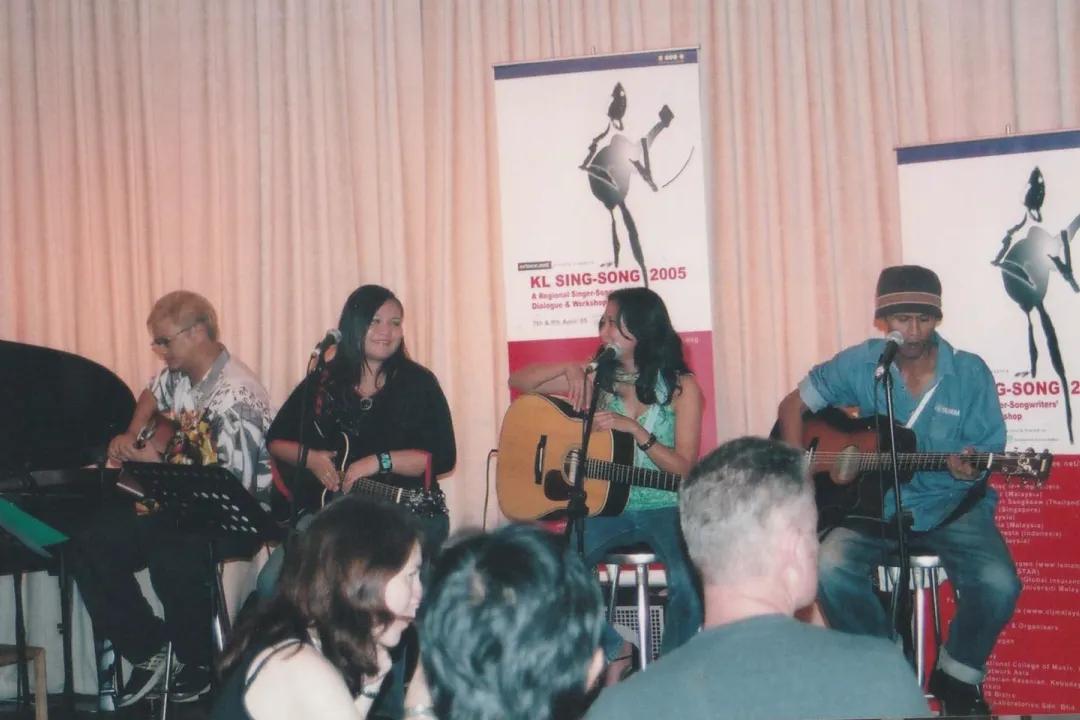KL Sing Song: Alternative Voices in the Kuala Lumpur Singer Songwriter Circuit (2000–2009)
Applying a DIY (Do-It-Yourself) ethos, the KL Sing Song event emphasized the use of original compositions and featured a variety of singer-songwriters with minimal instrumental accompaniment. In contrast to other music scenes which avoided political commentary, KL Sing Song provided an alternative cultural space for its participants by encouraging political content and satire, performed in non-commercial venues and art spaces. The showcase represented a popular music scene that echoed others in the region that emphasised the creative agency of mobility to speak up and sing loudly in an otherwise repressive political environment.
One cannot begin to understand the history of Malaysian popular music without contextualising it within the larger discourse of popular culture and national politics. The overemphasis on economic data has also overshadowed a holistic and historical understanding of the development of popular culture and its current state (or perpetual malaise) in Malaysia. Hence, popular music is still perceived by the public as escapist and merely a fodder for entertainment rather than seen as a fertile discourse about the cultural politics of Malaysia.
After all, popular culture is a product of social processes and cannot be separated from society, politics, and the time period in which it exists (Lockard 1998, 4). Studying the development of popular music culture requires an engagement with its history to better situate and understand its contemporary status (Shuker 2016, 261). If one were to trace patterns on discourses about Malaysian music, there is an overemphasis on the “golden eras”, discrediting musical communities that still produce musical works and perform in the present. The marginal non-mainstream music-gigging circuit has its own grassroots method of navigating music scenes not dictated by economic determinism and inadvertently produced some international indie “stars” such as Pete Teo and Yuna. However, issues such as economic sustainability still haunt most musicians and venues in Kuala Lumpur and the greater Klang Valley.
Departing from musical popular memory as constructed through the interaction of a number of sites that mediate and represent popular music history (Shuker 2016, 261), it examines written accounts, the wider music press, and personal experiences to trace the Malaysian singer-songwriter circuit from its early pub scene origins in the 1980s to its resurgence via the underground music scene networks in the early 2000s, leading up to the inception of the showcase in 2005 and smaller open-mic related projects such as Troubadours, Troubadours-Open Doors, and Troubanganger.
Given that the present-day discourse on “indie” has become commonplace, singer-songwriters make an interesting case study on independent networking and continue to have strong connotations of greater authenticity and “true” authorship (Shuker 2016). As musician and filmmaker Pete Teo indicate, “singer-songwriters work alone a lot, and often do as a matter of routine something most musicians are afraid of – play solo. Nowhere to hide. No one else to blame” (Teo 2019).
The showcase was the brainchild of singer-songwriters Jerome Kugan, Tan Sei Hon, and Azmyl Yunor and ran successfully, despite minimal funding and corporate sponsorship; all while featuring a majority of performers who received no airplay on mainstream media.
Mohd Azmyl Md Yusof
School of Arts
Email: @email
This article was first published in ‘Made In Nusantara: Studies in Popular Music’ (Routledge, 2021).




